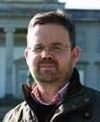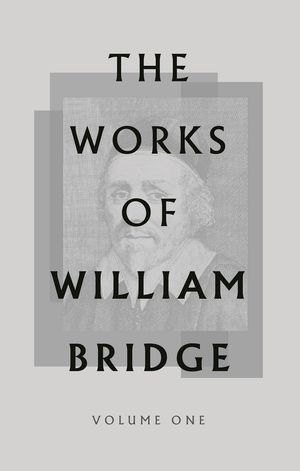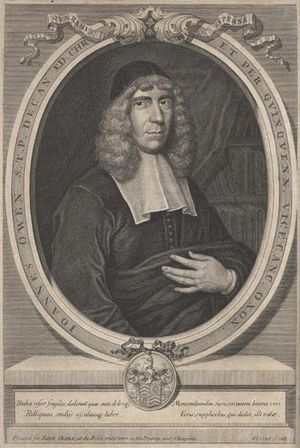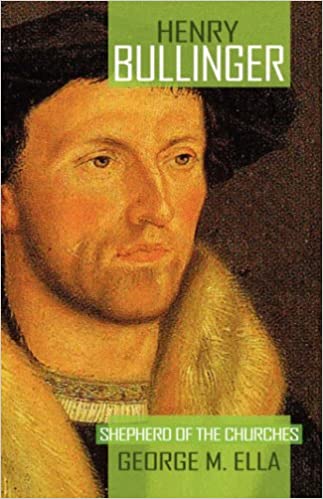Waterford, a harbour town on the southern coast of Ireland, is not a regular destination for visiting tourists. Its name is rarely associated with the grand stream of Irish church history.
But concealed in this obscurity is one of the most important churches in the history of the worldwide Baptist movement. In the early 1650s, Waterford Baptist Church stood at the centre of Baptist development.
Civil War
The church’s beginnings were shaped by the political events of the mid-seventeenth century. England, Scotland and Ireland were reeling under the pressures of Civil War.
With the King’s forces pitted against Parliament, law and order collapsed and traditional religious standards gave way. The Parliamentary army became a hothouse for the development of radical ideas. Few of its sects were more feared than the Baptists.
Historians have come to believe that English Baptist origins can be traced to the first separatist congregations in the 1590s.
These early puritans were dissatisfied with the unfinished reformation of the established church. That concern soon evolved into the theological principle that only believers should be baptised.
Baptist Confession
The first Baptist congregation seems to have met in London in 1609. It was not a Calvinistic church — it had closer links to the Anabaptists than the mainstream Reformers.
Another Baptist church in London was gathered around 1620, but it emphasised Old Testament dietary restrictions and a Saturday Sabbath.
It seems certain that the first Calvinistic Baptist congregation was formed around 1638. But it was not until 1640 that the London Baptists actually abandoned sprinkling and adopted immersion as their preferred symbol of dying and rising with Christ.
These doctrinal developments were codified in the first Baptist confession of faith produced in 1644.
Vigorously Protestant
The 1644 confession was vigorously Protestant — the Bible was its final authority. It was Calvinistic — emphasising the free grace and sovereign power of God; Evangelical — emphasising the necessity of the new birth and consequent holiness of life; and Baptist — arguing that baptism should follow an individual’s profession of faith.
The 1644 confession was reprinted several times and was the basis of the rapid expansion of the Baptists through the 1650s. In 1644, there were some seven churches, based mainly in London. By the end of the 1650s, there were around 130 churches, scattered throughout Britain and Ireland.
But this rapid growth could not be sustained. The Baptists grew because of their links to the parliamentary army, and declined with them.
Thomas Patient
Noone illustrates this rise and fall better than one of the men who signed the 1644 confession, and would later be the most influential early Baptist in Ireland — Thomas Patient.
It is not known when Thomas Patient was born. He first appears as an exile in New England. Initially he supported its Congregationalist ideology, but gradually grew dissatisfied.
When the first New England law was passed against the Baptists, in November 1644, Patient returned to England and became a ministerial assistant to William Kiffin, pastor of the Baptist congregation in Devonshire Square, London.
In London, Patient was at the centre of Baptist development. With Kiffin, and representatives of six other London churches, he signed the 1644 confession of faith.
Kiffin and Patient also engaged in local missionary activity, including one expedition to Kent in 1645 in which they lost their converts to the Arminian General Baptists.
They also met with opposition from the Presbyterian elite, who accused Patient and Kiffin of impropriety with a female baptismal candidate in Smithfield.
Dublin
But events were moving Patient on. When John Owen returned from Ireland pleading for missionaries, Patient was chosen by Parliament as one of six ministers to be sent to Dublin.
In Ireland, Patient first appears in Kilkenny in April 1650. By 1651, he had travelled to Waterford, seen its governor converted to Baptist thinking, and had moved to Dublin.
There he became pastor of a settled congregation and was made chaplain to Oliver Cromwell’s brother-in-law. The Waterford church, in the meantime, had elected a Mr Foster as its pastor and was meeting in a secluded house.
Patient was appointed to preach in Christ Church Cathedral — a far cry from the humbler gatherings of his English brethren. In 1653 he was responsible for erecting the first Baptist Meeting House in Ireland, in Swift’s Alley, Dublin.
By April 1654, however, colleagues noted that his congregation seemed to be drifting. In the same year, his only book, The Doctrine of Baptism, and the Distinction of the Covenants (1654), was published, and Patient was established as the foremost Calvinistic defender of believers’ baptism, a position admitted even by his enemies.
Imprisoned
Patient’s personal status was established within the Baptist community, as he took a prominent role in Irish civil life. But everything changed in 1660, when Charles II was restored to the English throne.
Patient returned to England around 1660, and became pastoral assistant to Henry Hynam in Bristol. In 1663 he was imprisoned by the town’s mayor, Sir John Knight, for illegal preaching.
In 1666 he returned to London to work as co-pastor with his former colleague William Kiffin in the Devonshire Square church, and was inducted by Kiffin and Hanserd Knollys.
Within one month, Patient had died of the plague, leaving his widow, Sarah, as his sole legatee. But he had left a great deal to posterity.
Waterford
Patient seems to have founded the Waterford church and his influence dominated its early life. Under his care, the church led the way in defining the historic boundaries of the Baptist movement throughout England, Scotland, Wales and Ireland.
Patient had helped to codify believers’ baptism by immersion in the movement’s first confession of faith. He had defined the local church as a fellowship of baptised believers.
And he promoted the close connection of Baptist fellowships throughout the British Isles — for, in the Waterford church, the foundations of the future Baptist associations were laid.
On 1 June 1653, the association of Irish Baptist churches sent a letter from Waterford to London. It was signed by Thomas Patient, and represented a list of ten congregations: Dublin, Waterford, Clonmel, Kilkenny, Cork, Limerick, Galway, Wexford, and Kerry, as well as a new work in Carrickfergus in the north.
Letter
The Waterford letter was accompanied by two other documents: one, a call to prayer; and the other, a tract advocating that Baptist churches should join in observing a monthly fast.
The letters did not directly cause the formation of the associations that would later characterise the Baptist community, but it did cause the London Baptist leaders to define which churches could be understood as being in fellowship with them.
Perhaps more importantly, the letter asked that the London leaders should begin a quarterly letter to the Irish churches describing their spiritual state; that they would provide a list of similar fellowships in England, Scotland and Wales; and that they would commission and support two missionaries.
In making these proposals, the Waterford church was taking a national lead, and beginning a work of international importance.
Chequered history
In the 350 years since, much has changed. But the Waterford church continues to hold its Calvinistic basis of faith.
Its membership, which reached its zenith in the mid-eighteenth century, when 115 were recorded in fellowship, is still small. But the work that Patient begun has continued.
In 1810, pastor Benjamin Dickson died midway through a sermon on the last judgement. Later in the nineteenth century, pastor Charles Hardcastle gained local fame for his sacrificial service to the people of Waterford through the potato famine.
His pastorate was the most important of the nineteenth century, but at his death, in 1847, the church had a membership of only 20. His replacement lasted six weeks before returning to England.
In 1861 Mr Wilshire resigned due to low morale, poor finance, and the unpromising nature of the Waterford church when revival was sweeping through many other parts of Ireland.
Continuing work
Revival still has not come, 150 years on. Since the mid-nineteenth century, church membership has fluctuated between 10 and 44. Yet the work continues — not with a sense of failure, but with confidence in the God who governs the history of his people.
The history of the Waterford church encourages us to believe that small fellowships can influence large movements — and that money and status are not necessary for the development of long-term spiritual influence.
It emphasises the power of the printed word in the long-term development of biblical reformation, and presents a moving portrait of a local fellowship maintaining its Reformed convictions through centuries of turmoil and challenge.
When our Lord spoke of the seed planted in the ground, he did not just argue that it would become the largest of trees — he also declared that it had to die before it would see new life.
The mark of the true church, Luther wrote, was that it always existed under the cross.
Ireland’s churches are full of crosses, but in the history of this small fellowship, in this unimportant town, lies the fulfilment of our Lord’s promise: ‘I will build my church’ — even in darkest Ireland.
The author’s new book The Irish Puritans — James Ussher and the Reformation of the Church in Ireland, published by Evangelical Press, is due this month.















